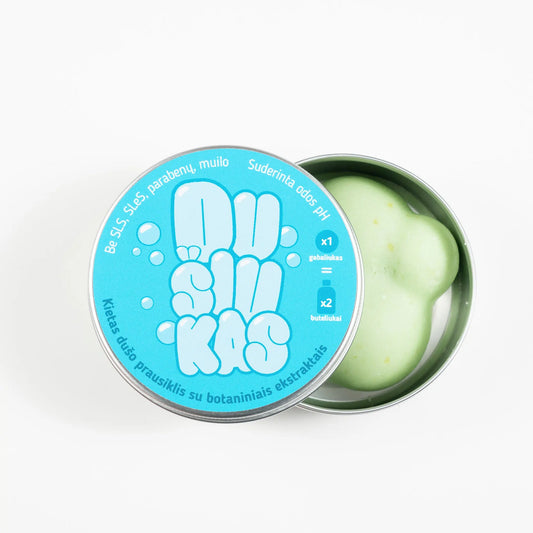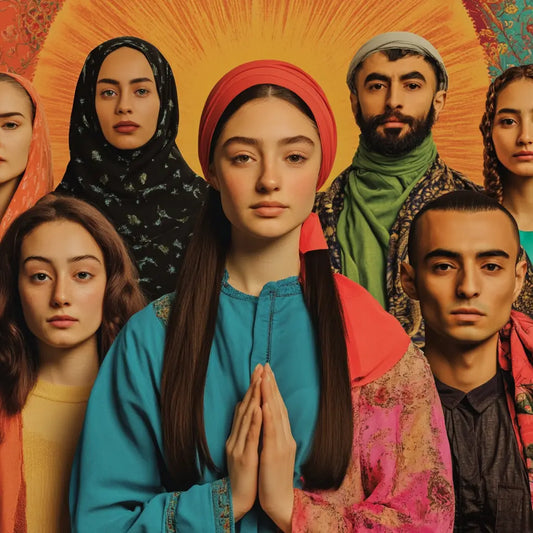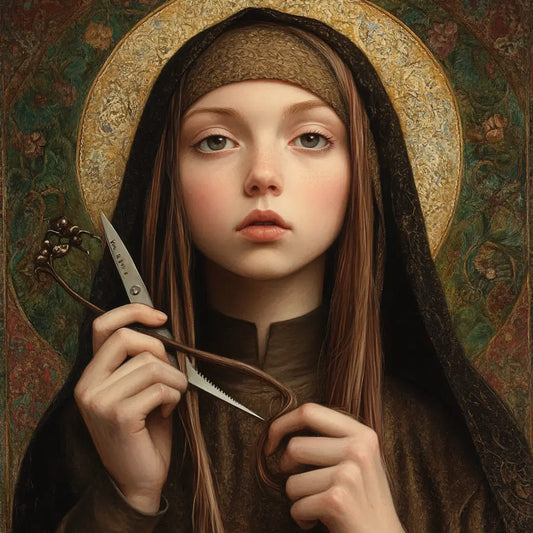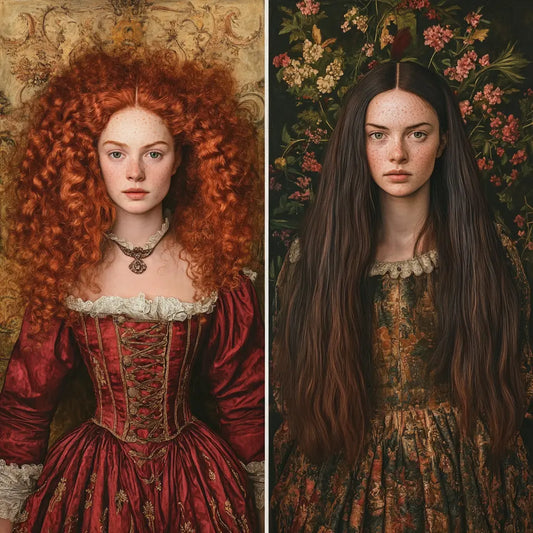Hair has always been much more than just a physical feature. It has symbolized power, identity, faith, and even a direct connection to the divine. In different cultures and religions, sacred hair relics from saints, historical figures, and cultural icons have been preserved and revered. These relics have symbolized blessings, protection, or have been the objects of scientific research. In this article, we will reveal lesser-known facts about hair relics, their role in religion, history, and how these symbols continue to shape our culture.
Introduction to Holy Relics and Hair
Hair relics are unique in that, unlike other parts of the human body, hair does not decay easily. This physical durability makes hair an ideal material for relics, both religious and secular. Hair was preserved in order to maintain a direct connection to the essence of a person's life or spirit.
- Fun fact: Hair grows at about 0.35 mm per day and continues to grow for up to two weeks after death, which is why hair was often collected shortly after a person's death.
From ancient times to the present day, locks of hair have been considered sacred or sentimental objects, capable of providing a special connection to their owner. In various religions, these relics have been used in rituals and are considered sacred objects, believed to have spiritual power. Similarly, hair relics from historical figures provide a connection to the past and are even used in scientific research.
Hair relics in religious beliefs
Christianity
In Christianity, hair relics of saints and martyrs have long been valued. The Catholic Church in particular has preserved these relics for veneration, often enshrining them in elaborate reliquaries. Believers venerate these relics, believing they have healing or healing powers.
- Cultural Insight: In medieval Europe, it was common to include hair relics in religious objects such as crosses or altars. Some monarchs even wore jewelry containing relics for protection.

One of the most famous hair relics in Christianity is the lock of St. Mary Magdalene . Her hair is kept in the Basilica of Saint-Maximin-la-Sainte-Baume in France, where the relic is visited by pilgrims. Similarly, the hair relic of Pope John Paul II was distributed to various churches after his death in 2005, attracting many believers.
- Fun fact: The veneration of relics is so important in Christianity that there are three classifications of relics. First-class relics include body parts such as bones or hair, second-class relics are objects that were used by a saint, and third-class relics are objects that have touched a first-class relic.

Islam
In Islam, hair relics also have special significance, especially those of the Prophet Muhammad. Many Muslim communities believe that these relics can bring blessings, healing, and protection. One of the most famous hair relics of the Prophet Muhammad is preserved in the Topkapi Palace in Istanbul, Turkey, and is kept under extreme security.
- An unexpected number: Relics of the Prophet Muhammad's hair are kept in at least 52 locations around the world, including Turkey, Pakistan, and India.
The hair relic of the Prophet, housed in the Topkapi Palace, is publicly displayed on special occasions, and many Muslims consider it a sacred opportunity to receive blessings.

Buddhism
In Buddhism, relics from the Buddha or notable monks, including hair, are valued for their spiritual power. Hair relics are considered to have spiritual power and a direct connection to the Buddha's teachings. A famous relic enshrined in the Shwedagon Pagoda in Myanmar, which is believed to house eight locks of the Buddha's hair .
- Fact: The Shwedagon Pagoda is visited by tens of thousands of pilgrims each year, and the Buddha's hair relic is often said to inspire a deep state of spirituality and meditation.
In many Buddhist cultures, the preservation of hair relics also symbolizes the continuity of spiritual teachings, and some monks make sacrifices by cutting off their hair as a sign of humility.

Hair relics of famous historical figures
Napoleon Bonaparte
Napoleon Bonaparte's hair relics are not only historically significant, but also useful for scientific research. After his death in 1821, locks of his hair were cut and distributed to his closest followers. These locks were later studied to uncover details about his life and even his death.
- Research Insight: Tests conducted on Napoleon's hair revealed high levels of arsenic , sparking debate about whether he was poisoned or whether the arsenic was due to environmental exposure. The discovery has sparked historical and forensic research.

Relics of Napoleon's hair are in various museums and private collections around the world, providing a personal connection to the famous military leader.
Queen Victoria
Queen Victoria was known for her sentimentality, and hair relics were an important part of her personal life. She kept locks of her children's and relatives' hair in lockets and albums. After the death of her husband, Prince Albert, she wore a locket of his hair in a locket every day until her death.

- Victorian Fashion: During the Victorian era, it became fashionable to keep heirlooms of the hair of loved ones. The hair was often braided into intricate designs and placed in mourning jewelry such as brooches, rings, or medallions.
Ludwig van Beethoven
Ludwig van Beethoven's hair relic has become a center of attention not only for its historical significance but also for scientific research. After his death in 1827, locks of his hair were preserved and studied over time to determine his state of health.
- Scientific discovery: In 2000, researchers analyzed a sample of Beethoven's hair and found elevated levels of lead . This suggested that Beethoven may have suffered from lead poisoning, which could explain his chronic illnesses and possibly even deafness.
These discoveries show how hair relics can be historical and scientific artifacts, providing insights into the lives of famous figures even after their death.
Hair relics of cultural icons
Elvis Presley
Elvis Presley, the King of Rock and Roll, is one of the icons whose hair relics are highly prized. Fans have gone to great lengths to obtain a lock of Elvis' black hair. Locks of Elvis' hair have sold for huge sums at auction, showing how much fans value the physical connection with their idol.
- Auction Insight: In 2002, a lock of Elvis' hair sold for $115,000 , making it one of the most expensive hair relics ever sold.

One of Elvis' most famous hair relics comes from his military haircut in 1958, which marked his transition from rock star to military service. The locks of hair were saved by his barber and later sold to collectors, further cementing Elvis' legacy through his hair.
Marilyn Monroe
Marilyn Monroe's beauty and mystery live on through her hair relics. Strands of her blonde locks have sold at auction for tens of thousands of dollars, and collectors see them as a way to own a piece of her timeless elegance.
- Auction Insight: In 2016, a lock of Marilyn Monroe's hair sold at auction for over $50,000 . Collectors continue to pay high prices for these relics, showing how Monroe's cultural influence endures.

For many, owning a lock of Marilyn's hair is more than just a souvenir - it's an intimate connection to one of the most famous Hollywood stars in history.
Myth busting or interesting facts
- Myth: Hair relics are only kept in religious contexts.
Fact: Hair relics are also kept from historical figures, cultural icons, and even ordinary people, preserving strands of their hair as sentimental objects. - Fun fact: A strand of Beethoven's hair helped reveal that he likely suffered from lead poisoning, settling a centuries-old controversy over his health problems.
- Myth: Hair relics decompose like other body parts.
Fact: Hair is made of keratin, a tough protein that resists decay. Properly preserved hair relics can last for centuries. - Fun fact: During the Victorian era, keeping locks of loved ones' hair was so popular that entire industries were dedicated to making jewelry from hair.
- Myth: Famous hair relics are only kept in museums.
Fact: While many hair relics are kept in museums, many are privately owned and sold at auctions, sometimes for large sums.

Practical tips
- Visit famous hair relics: Many historical and religious sites display hair relics. For example, visit the Topkapi Palace in Turkey, where the hair of the Prophet Muhammad is kept, or the Basilica of Saint-Maximin-la-Sainte-Baume in France, where you can see the hair relic of St. Mary Magdalene.
- Preserving hair relics: If you have a lock of a loved one's hair, store it in a dry, airtight container, protected from sunlight, to help it last longer.
- Learn through history: Explore the stories behind the most famous hair relics. Reading biographies or visiting exhibitions that feature these relics can help you better understand historical and cultural figures.
- Explore the meanings of hair relics in different cultures: Many cultures around the world have their own traditions regarding hair relics. Learning about these practices will help you better understand how hair was symbolically valued.
- Collecting Hair Relics: If you are interested in hair relics, consider attending auctions or looking for them in antique shops. Some hair relics from cultural icons are sold at auctions, providing a unique opportunity for collectors.
Frequently asked questions
- Why are hair relics preserved?
Hair relics are preserved as a way to maintain a physical connection to saints, historical figures, or loved ones. They often have spiritual or sentimental value. - How long can hair relics last?
Hair is made of keratin, which is resistant to decay. Properly cared for hair relics can last for centuries. - Are hair relics just religious artifacts?
Not all hair relics are religious. Some are preserved from historical figures, cultural icons, or ordinary people, and have sentimental significance. - Where can you see famous hair relics?
Hair relics are exhibited in various museums and religious sites, such as the Topkapi Palace in Turkey and the Beethoven House in Germany. - Are hair relics valuable?
Yes, hair relics from famous people can be extremely valuable. For example, locks of hair from Elvis Presley or Marilyn Monroe have sold for tens of thousands of dollars at auction.

Conclusion
Hair relics hold a special place in both religious and cultural history, symbolizing devotion, remembrance, and even power. From saints and religious figures in Christianity, Islam, and Buddhism to famous figures such as Napoleon, Queen Victoria, Elvis Presley, and Marilyn Monroe, these relics offer a fascinating glimpse into how hair was revered. Whether displayed in museums or held by private collectors, hair relics continue to fascinate and inspire, providing a connection between the past and the present through a tangible piece of history.













